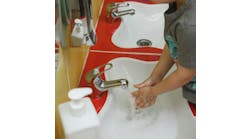Think of the times you've been plunked down into a new environment. At a new job — where's the conference room, the coffee machine, the bathroom? In a new neighborhood — where's the library, the dry cleaner, the quickest route to the grocery store, the intersections to avoid at rush hour?
Now take that uncertainty and multiply it by the dozens of buildings and the thousands of new students who arrive every year on college campuses. Unless a school has a clear way to inform new students, staff and visitors how to get around campus, officials might find themselves dealing with hordes of frustrated and irritable motorists and pedestrians.
According to Delta College in University Center, Mich., its wayfinding system is a key component of customer service.
“The wayfinding directional system is … designed with the first-time visitor in mind,” the college states in a brochure about its signage system. “Wayfinding, though, clearly saves everyone time in our hurry-up world. It also helps our customers avoid the disconcerting feeling of being lost.”
The main campus consists of one large facility with numerous wings and a roadway that encircles it. The hierarchy of signs for the campus starts with campus identification signs, which are placed at public road entrances to guide drivers onto the campus. Main directional signs listing services (e.g., admissions, human resources) and the corresponding areas (East Campus, West Campus) are situated along the road on campus.
Secondary directional signs identify main parking areas. Traffic control signs along parking lanes inform visitors of the most convenient parking areas for their destination. Lot identification signs are mounted atop light poles in the parking lots to further identify the campus location and the adjacent wings of the facility. Pedestrian directional signs are positioned along roadways to identify service and the wings of the building that correspond to them.
Inside the facility, letters (A through P) identify wings, and room numbers identify building levels (lower level 001-099, main level 100-199, and upper level 200-299).
A crucial element in an effective signage system is consistency. Delta tells its staff to make sure that any signs inside campus facilities be consistent with what visitors will see on exterior signs.
The school urges employees to familiarize themselves with the sign system so they can give directions.
“When giving direction by e-mail, phone, or through media pieces they should reflect the destination names and locations as they are listed on the main directionals, parking-lane markers, and the pedestrian signage,” the college recommends.
That means avoiding abbreviations and acronyms that may be familiar to campus regulars, but mean nothing to visitors and newcomers.
“Taking a few minutes to provide our customers with consistent and accurate information when giving directions … reflects well on the institution as a whole,” the college says.
NOTABLE
The University of Connecticut, in a 2005 plan for developing a wayfinding system, identified four guiding principles:
- Focus recommendations on the visitor.
- Minimize the number of signs utilized.
- Use consistent design standards.
- Minimize message complexity.
Source: University of Connecticut, “Campus Wayfinding”

